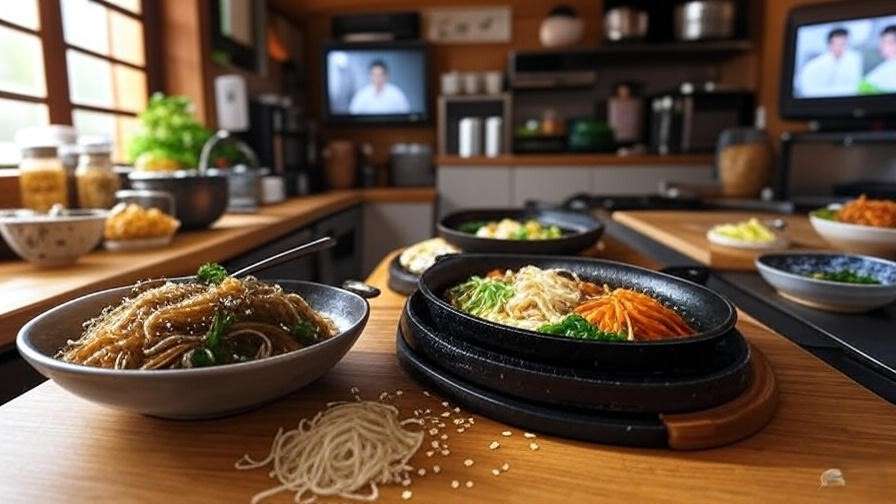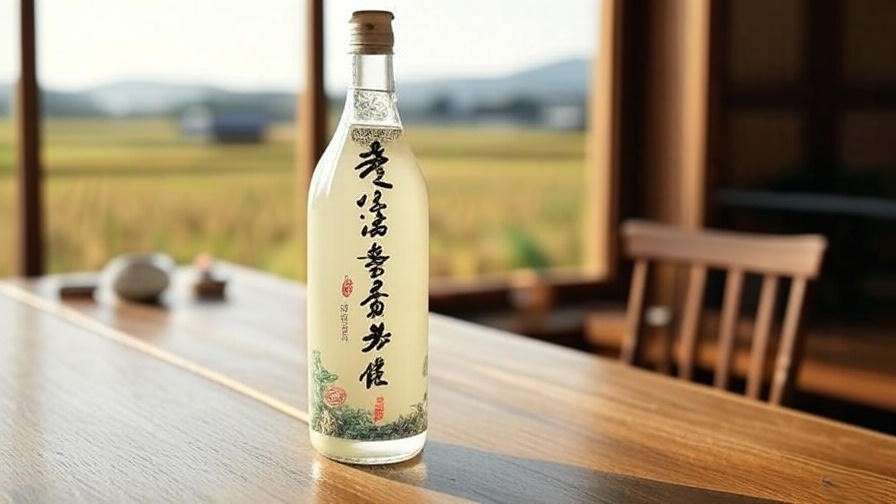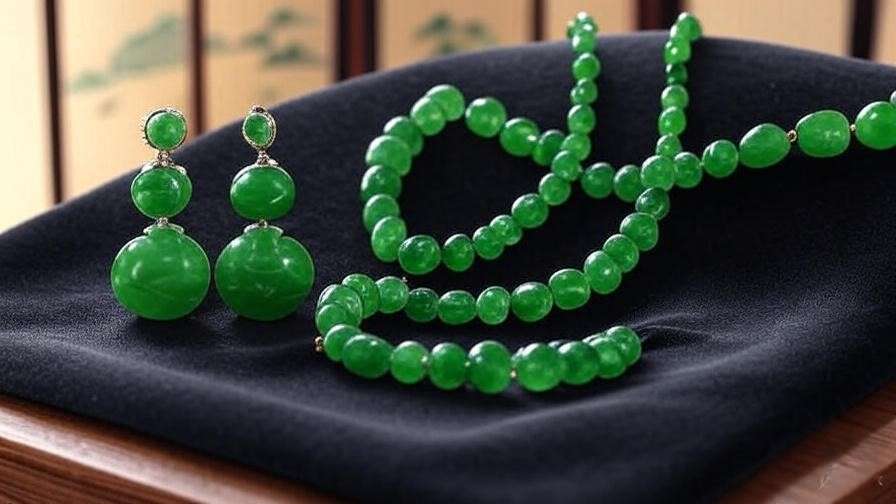Picture yourself in a vibrant Korean kitchen, the air thick with the nutty, toasty aroma of Korean sesame oil as it sizzles in a pan of bibimbap or drizzles over a bowl of steaming japchae. This golden elixir, known as chamgireum in Korean, is more than just a cooking ingredient—it’s a cultural cornerstone that defines the soul of Korean cuisine. Whether you’re a K-drama fan captivated by scenes of family feasts or a home cook eager to recreate authentic Korean flavors, understanding Korean sesame oil is your key to unlocking the heart of Korea’s culinary and cultural heritage. In this comprehensive guide, we’ll explore its history, culinary uses, health benefits, and practical tips to elevate your cooking, drawing on years of studying Korean culinary traditions and insights from Korean chefs to deliver an authoritative resource for enthusiasts and foodies alike.
What Is Korean Sesame Oil?
Defining Korean Sesame Oil
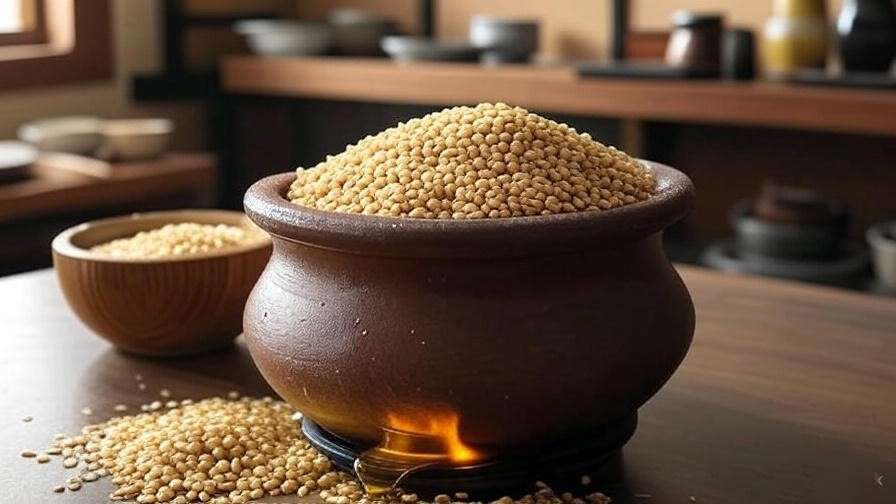 Korean sesame oil, or chamgireum, is crafted from toasted sesame seeds, giving it a distinctively rich, nutty flavor that sets it apart from other sesame oils. Unlike the neutral, untoasted sesame oil used in some cuisines or the lighter Chinese sesame oil, Korean sesame oil is deeply aromatic, with a warm, golden hue. The traditional production process involves carefully roasting sesame seeds to release their natural oils, then pressing them to extract a pure, unrefined product. This method enhances the oil’s robust flavor, making it a staple in Korean kitchens for both cooking and finishing dishes.
Korean sesame oil, or chamgireum, is crafted from toasted sesame seeds, giving it a distinctively rich, nutty flavor that sets it apart from other sesame oils. Unlike the neutral, untoasted sesame oil used in some cuisines or the lighter Chinese sesame oil, Korean sesame oil is deeply aromatic, with a warm, golden hue. The traditional production process involves carefully roasting sesame seeds to release their natural oils, then pressing them to extract a pure, unrefined product. This method enhances the oil’s robust flavor, making it a staple in Korean kitchens for both cooking and finishing dishes.
The Cultural Significance of Sesame Oil in Korea
Sesame oil has been a pillar of Korean cuisine for centuries, its roots tracing back to ancient agricultural practices in the Korean peninsula. Historically, sesame seeds were prized for their resilience and nutritional value, and their oil became integral to both everyday meals and ceremonial dishes. From the vibrant banchan (side dishes) served at family gatherings to the minimalist cuisine of Buddhist temples, Korean sesame oil adds depth and warmth. Renowned Korean chef Hooni Kim notes, “Sesame oil is the heartbeat of Korean cooking—it’s not just flavor, it’s memory and tradition in every drop.” Its presence in K-dramas, where characters share meals of kimchi jjigae or grilled meats, underscores its role in fostering community and connection.
Why Korean Sesame Oil Stands Out
Flavor Profile and Culinary Versatility
 The magic of Korean sesame oil lies in its bold, toasty flavor, which delivers an umami-rich punch to any dish. Often used as a finishing oil, it enhances everything from stir-fried vegetables to grilled meats. Its versatility shines in classics like bibimbap, where a drizzle ties together the vibrant medley of flavors, or in dipping sauces for Korean BBQ, where it balances savory and spicy notes. Modern Korean chefs also experiment with it in unexpected ways, such as drizzling it over desserts like rice cakes for a nutty twist.
The magic of Korean sesame oil lies in its bold, toasty flavor, which delivers an umami-rich punch to any dish. Often used as a finishing oil, it enhances everything from stir-fried vegetables to grilled meats. Its versatility shines in classics like bibimbap, where a drizzle ties together the vibrant medley of flavors, or in dipping sauces for Korean BBQ, where it balances savory and spicy notes. Modern Korean chefs also experiment with it in unexpected ways, such as drizzling it over desserts like rice cakes for a nutty twist.
| Type | Flavor | Best Uses |
|---|---|---|
| Korean Sesame Oil | Rich, toasty, nutty | Finishing, marinades, dipping |
| Chinese Sesame Oil | Milder, slightly smoky | High-heat cooking, stir-fries |
| Untoasted Sesame Oil | Neutral, bland | General cooking, neutral base |
Quality and Authenticity
Authentic Korean sesame oil is crafted with care, often in small batches to preserve quality. The best oils are cold-pressed from high-quality, roasted sesame seeds, ensuring a pure, unadulterated flavor. When shopping, look for labels indicating “100% sesame” or “made in Korea” to avoid blended or lower-quality oils. Brands like Ottogi and CJ are widely trusted, while artisanal producers offer premium options for purists. Be cautious of imposters—some oils mix sesame with cheaper vegetable oils, diluting the flavor and authenticity.
Health Benefits of Korean Sesame Oil
Nutritional Profile
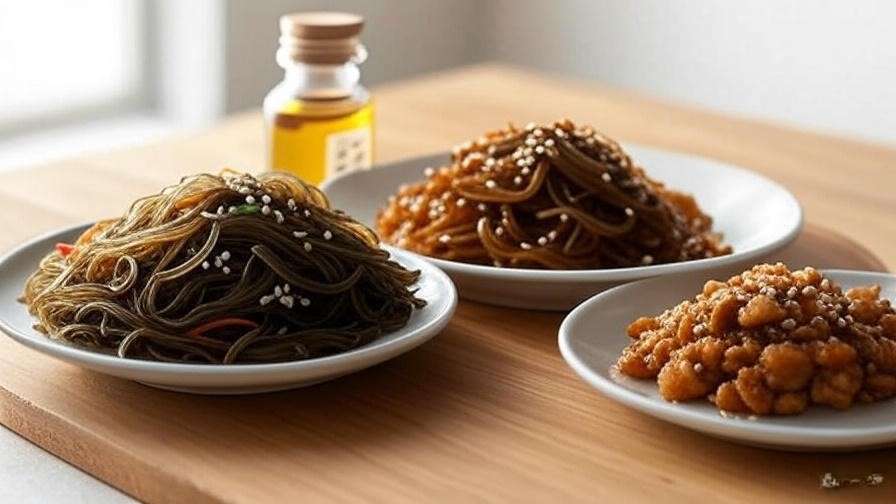 Korean sesame oil is packed with healthy fats, including monounsaturated and polyunsaturated fatty acids, which support heart health when used in moderation. It’s also rich in antioxidants like sesamol and sesamin, which combat oxidative stress, and contains small amounts of vitamin E. According to a 2020 study in Nutrients, sesame oil’s unique compounds may help reduce inflammation and improve cholesterol levels, making it a valuable addition to a balanced diet.
Korean sesame oil is packed with healthy fats, including monounsaturated and polyunsaturated fatty acids, which support heart health when used in moderation. It’s also rich in antioxidants like sesamol and sesamin, which combat oxidative stress, and contains small amounts of vitamin E. According to a 2020 study in Nutrients, sesame oil’s unique compounds may help reduce inflammation and improve cholesterol levels, making it a valuable addition to a balanced diet.
Potential Health Advantages
Beyond nutrition, Korean sesame oil is celebrated for its potential health benefits. Its antioxidants may support cardiovascular health by reducing LDL cholesterol oxidation, while its anti-inflammatory properties are valued in traditional Korean medicine. In K-beauty, sesame oil is used topically for its moisturizing and anti-aging effects, often incorporated into hair masks or skin serums. However, moderation is key—its high caloric content (about 120 calories per tablespoon) means a little goes a long way. Always consult a nutritionist before making significant dietary changes.
Korean Sesame Oil in Authentic Recipes
Classic Korean Dishes Featuring Sesame Oil
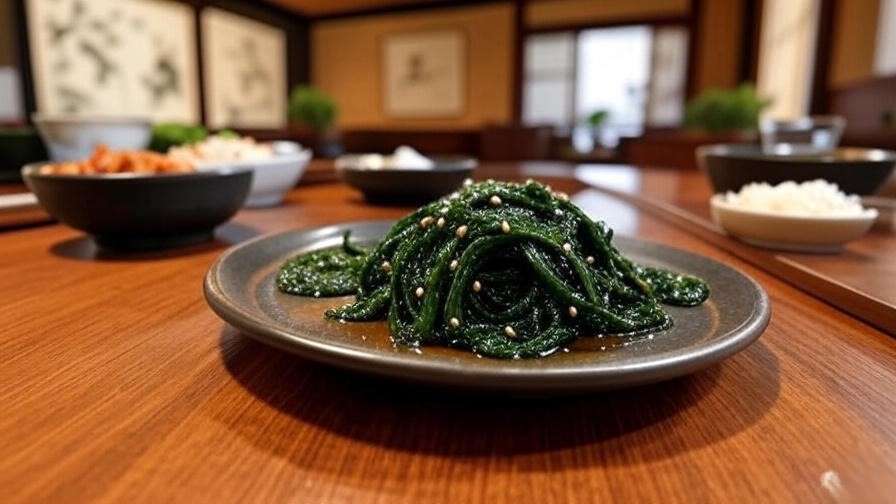 Korean sesame oil is the star of many iconic dishes. Here’s a quick guide to one beloved banchan: sesame-seasoned spinach (sigeumchi namul).
Korean sesame oil is the star of many iconic dishes. Here’s a quick guide to one beloved banchan: sesame-seasoned spinach (sigeumchi namul).
Mini-Recipe: Sesame-Seasoned Spinach
- Ingredients: 1 lb fresh spinach, 1 tbsp Korean sesame oil, 1 tsp soy sauce, 1 tsp minced garlic, 1 tsp toasted sesame seeds, pinch of salt.
- Steps:
- Blanch spinach in boiling water for 30 seconds, then rinse in cold water.
- Squeeze out excess water and chop roughly.
- In a bowl, mix spinach with sesame oil, soy sauce, garlic, sesame seeds, and salt.
- Serve as a side dish with rice or as part of a banchan spread.
This dish, often seen in K-dramas like Crash Landing on You during cozy family meals, showcases sesame oil’s ability to elevate simple ingredients. Other classics include japchae (stir-fried glass noodles), where it adds gloss and flavor, and kimchi fried rice, where it enhances the dish’s smoky depth.
Modern and Fusion Uses
Korean sesame oil isn’t limited to traditional recipes. Modern cooks use it to add a Korean twist to global dishes. Try drizzling it over avocado toast for a nutty kick or whisking it into salad dressings with soy sauce and rice vinegar. Chef Judy Joo suggests, “A few drops of sesame oil can transform a basic soup or roasted vegetables into something extraordinary.” For fusion inspiration, blend it into hummus or use it as a marinade for grilled chicken, balancing its intensity with milder ingredients.
Pro Tip: To avoid overpowering dishes, start with a teaspoon of sesame oil and adjust to taste, especially in non-Korean recipes.
How to Choose and Store Korean Sesame Oil
 Selecting the Best Korean Sesame Oil
Selecting the Best Korean Sesame Oil
Choosing high-quality Korean sesame oil is crucial for authentic flavor. Look for a dark amber color and a strong, nutty aroma when you open the bottle. Reputable brands like Ottogi, CJ, and Sempio are widely available, while artisanal options from small Korean producers offer premium quality. Check labels for “100% pure sesame oil” and avoid products with additives or blended oils. While premium oils may cost more ($10–$20 for 16 oz), their concentrated flavor means a small amount goes far.
Recommended Brands:
- Ottogi: Known for its rich, consistent flavor.
- CJ: Widely available and budget-friendly.
- Yeosang: Artisanal, small-batch option for purists.
Proper Storage Tips
To preserve Korean sesame oil’s flavor, store it in a cool, dark place, away from heat and sunlight. A pantry or cupboard is ideal. Unopened bottles last 1–2 years, while opened ones should be used within 6–12 months for optimal freshness. If you notice a rancid smell or off taste, discard the oil. To minimize air exposure, consider transferring smaller amounts to a dark glass bottle, especially for infrequent use.
Tip: Keep sesame oil in a tightly sealed container to maintain its aroma and prevent oxidation.
Korean Sesame Oil in Korean Culture Beyond the Kitchen
Sesame Oil in Korean Beauty and Wellness
In Korean beauty, sesame oil is a time-honored ingredient. Its moisturizing properties make it a staple in hair masks and skin treatments, often used in jjimjilbang (Korean spas) to nourish dry skin. Modern K-beauty brands incorporate sesame oil into serums and creams for its antioxidant benefits. Traditionally, it’s been used in home remedies, like massaging scalps to promote hair growth or soothing minor burns, reflecting Korea’s holistic approach to wellness.
Symbolism and Rituals
Sesame oil holds symbolic weight in Korean culture, often used in ancestral rites (jesa) to honor the deceased. Its rich aroma is believed to connect the living with their ancestors, a practice depicted in K-dramas like Vincenzo. In Buddhist temple cuisine, sesame oil is a key ingredient in vegan dishes, symbolizing purity and simplicity. These cultural ties deepen its significance, making it a bridge between food, tradition, and spirituality.
Common Mistakes to Avoid with Korean Sesame Oil
To get the most out of Korean sesame oil, avoid these common pitfalls:
- Overheating: High heat can burn the oil, destroying its flavor. Use it as a finishing oil or in low-heat cooking.
- Using Too Much: Its bold flavor can overwhelm dishes. Start with small amounts (1 tsp) and adjust.
- Buying Low-Quality Oil: Blended or untoasted oils lack the authentic taste. Always check for 100% sesame content.
Dos and Don’ts Checklist:
- Do: Use as a finishing oil for maximum flavor.
- Do: Store in a cool, dark place.
- Don’t: Use in high-heat frying.
- Don’t: Overuse in delicate dishes.
Where to Buy Korean Sesame Oil
Find authentic Korean sesame oil at Asian markets like H Mart or online retailers such as Amazon or Weee!. Local Korean grocery stores often stock high-quality options and provide a cultural experience—perfect for K-drama fans wanting to immerse themselves in Korean culture. For deals, check bulk retailers, but prioritize quality over price. Exploring a Korean market can also inspire new recipe ideas, like recreating dishes from Itaewon Class.
Call-to-Action: Visit a local Korean market to discover sesame oil and other authentic ingredients, and share your finds in the comments!
FAQs About Korean Sesame Oil
Q1: What’s the difference between Korean sesame oil and other sesame oils?
A: Korean sesame oil is made from toasted sesame seeds, giving it a richer, nuttier flavor compared to neutral or lightly toasted oils used in other cuisines.
Q2: Can I cook with Korean sesame oil at high heat?
A: It’s best used as a finishing oil or in low-heat cooking, as high heat can degrade its flavor.
Q3: Is Korean sesame oil good for health?
A: In moderation, it offers healthy fats and antioxidants, supporting heart health and reducing inflammation (see Health Benefits section).
Q4: How do I know if my sesame oil is authentic?
A: Look for “100% sesame” on the label, a dark amber color, and a strong, nutty aroma. Trusted brands like Ottogi ensure quality.
Q5: Can I use Korean sesame oil in non-Korean dishes?
A: Absolutely! It adds depth to salads, soups, and even fusion dishes like sesame-infused hummus (see Modern and Fusion Uses).
Korean sesame oil is more than a pantry staple—it’s a gateway to the heart of Korean cuisine and culture. From elevating bibimbap to enriching K-beauty routines, its versatility and rich heritage make it a must-have for foodies and K-drama fans alike. Whether you’re drizzling it over a traditional dish or experimenting with fusion recipes, this golden oil brings authenticity and flavor to every bite. Try incorporating it into your cooking, explore its cultural roots, and share your experiences in the comments below. Dive into the world of Korean sesame oil and let it inspire your culinary journey!

